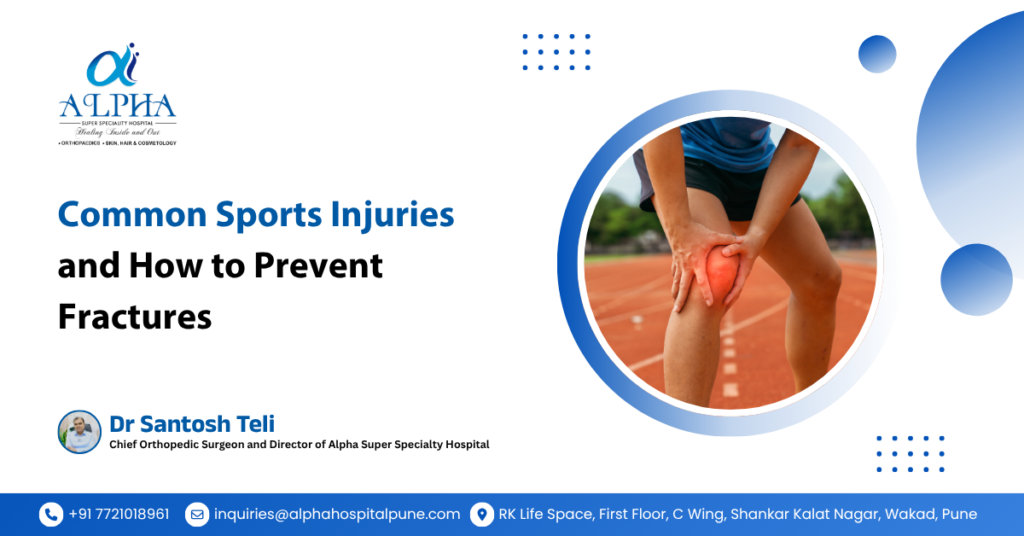Sports activities are a great way to stay fit, improve endurance, and enhance mental health. However, they also come with the risk of injuries, ranging from minor sprains to severe fractures. Understanding common sports injuries and taking preventive measures can help athletes of all levels stay safe while enjoying their favorite activities.
Dr. Santosh Teli, a renowned orthopedic surgeon, shares insights on preventing fractures and managing sports-related injuries effectively.
Common Sports Injuries
1. Fractures
Fractures occur when a bone breaks due to sudden impact, overuse, or stress. Common types in athletes include:
- Stress fractures: Small cracks in bones, often caused by repetitive motion.
- Compound fractures: Bones break and pierce the skin, requiring immediate medical attention.
2. Sprains and Strains
- Sprains affect ligaments connecting bones.
- Strains affect muscles or tendons.
- Sports like basketball, football, and running are more prone to these injuries.
3. Dislocations
Dislocations happen when bones are forced out of their normal position, commonly in shoulders and fingers during contact sports or falls.
4. Tendon Injuries
Tendinitis and ruptures occur due to repetitive stress or overuse, often affecting knees, elbows, and shoulders.
5. Concussions
Head injuries, especially in contact sports, can lead to concussions. These require immediate evaluation to prevent long-term complications.
Risk Factors for Sports Injuries
- Poor physical conditioning
- Inadequate warm-up or stretching
- Using improper techniques or equipment
- Playing on unsafe surfaces
- Overtraining or lack of rest
Tips to Prevent Fractures and Injuries
1. Proper Warm-Up and Cool-Down
Always start with a 10-15 minute warm-up before sports and cool down afterward to prevent muscle stiffness and improve flexibility.
2. Strength and Conditioning
Engage in exercises to strengthen muscles around vulnerable bones, such as the wrists, hips, and legs. Strong muscles help absorb impact and reduce fracture risks.
3. Use Protective Gear
Helmets, knee pads, wrist guards, and mouthguards can protect against fractures and head injuries.
4. Follow Correct Techniques
Learn and maintain proper techniques for your sport. Incorrect posture or movements increase the chance of injuries.
5. Rest and Recovery
Avoid overtraining. Allow muscles and bones time to recover to prevent stress fractures and chronic injuries.
6. Nutrition and Hydration
Adequate intake of calcium, vitamin D, and protein strengthens bones. Hydration helps maintain muscle function and reduces cramping or injury risk.
When to See an Orthopedic Surgeon
Even minor injuries can worsen if untreated. Seek professional help if you experience:
- Severe pain or swelling
- Difficulty moving a joint
- Visible bone deformity
- Persistent weakness or numbness
Dr. Santosh Teli, a specialist in orthopedic and sports injuries, provides expert diagnosis, treatment, and rehabilitation for athletes to ensure a safe return to sports.
Conclusion
Sports are a vital part of a healthy lifestyle, but injuries like fractures can sideline even the most dedicated athletes. By following preventive measures, using proper equipment, and seeking timely medical care, you can enjoy your favorite sports while keeping injuries at bay.

